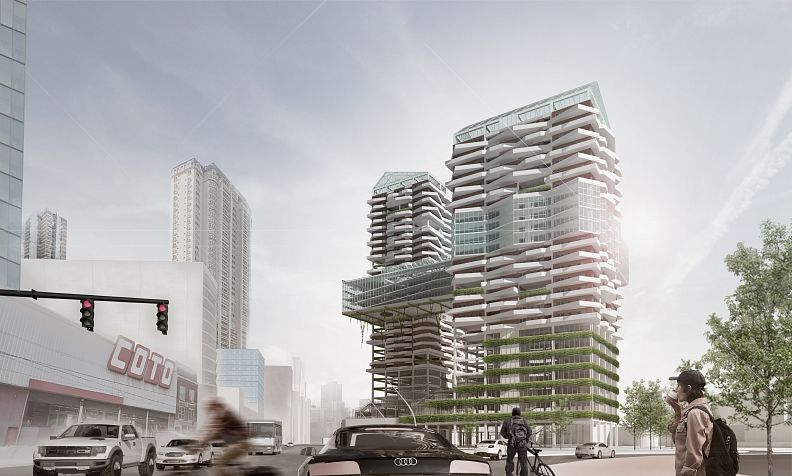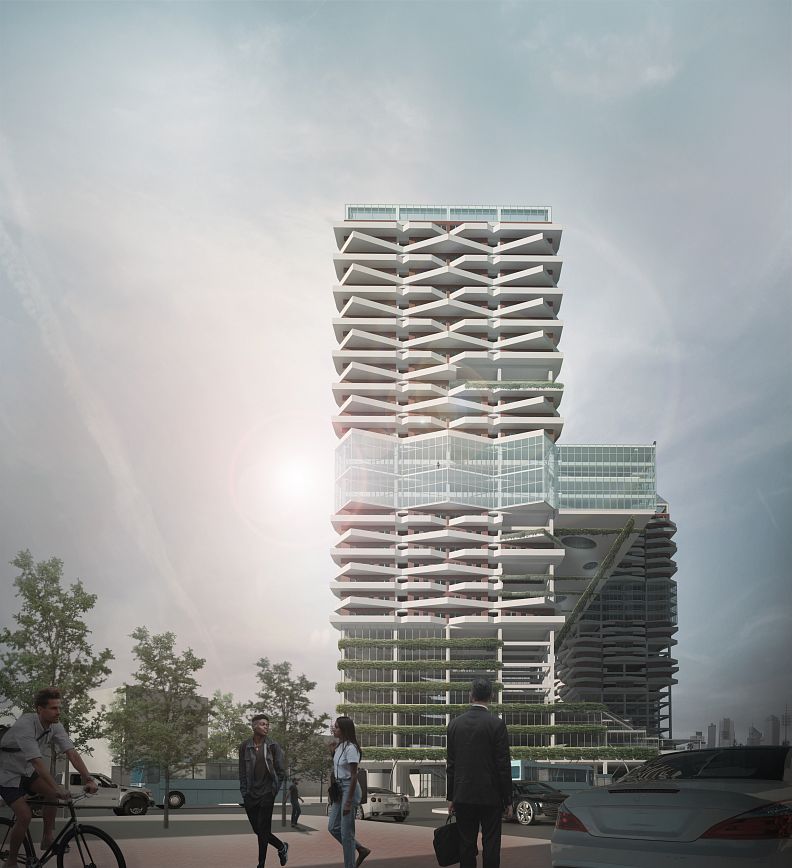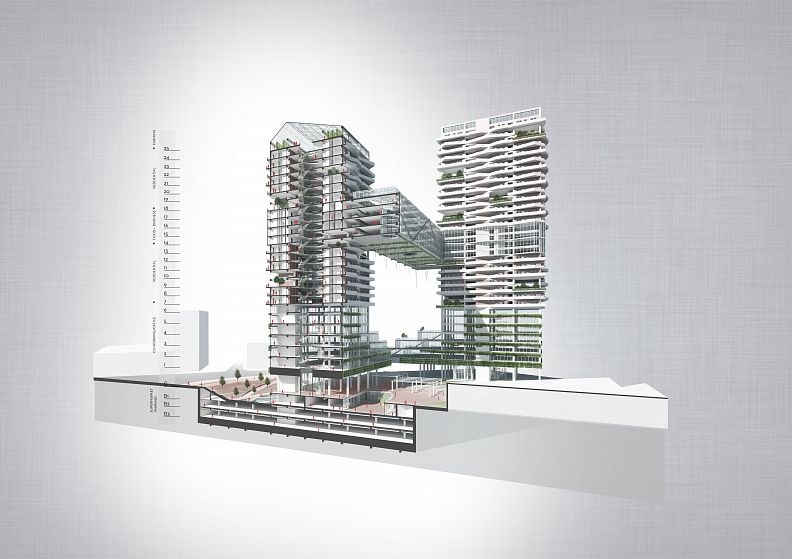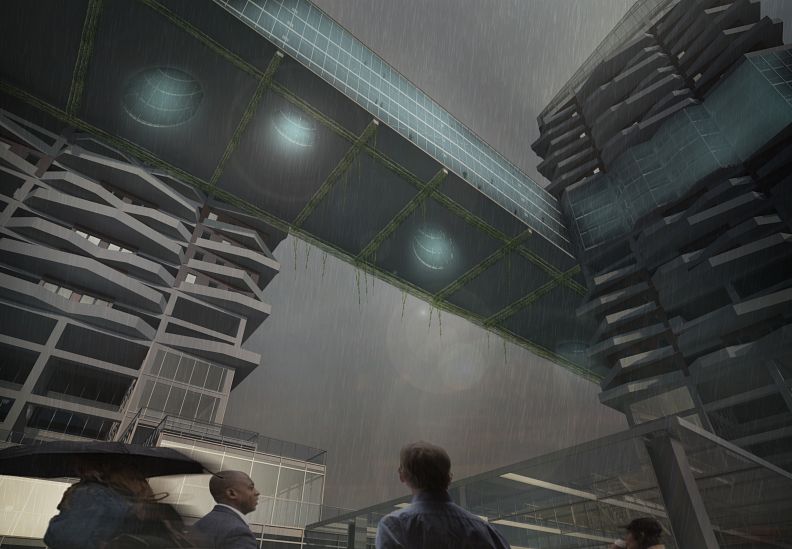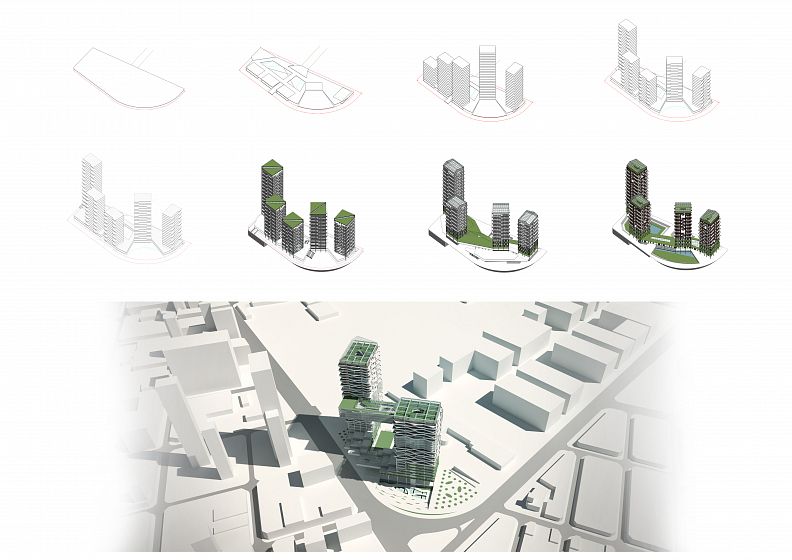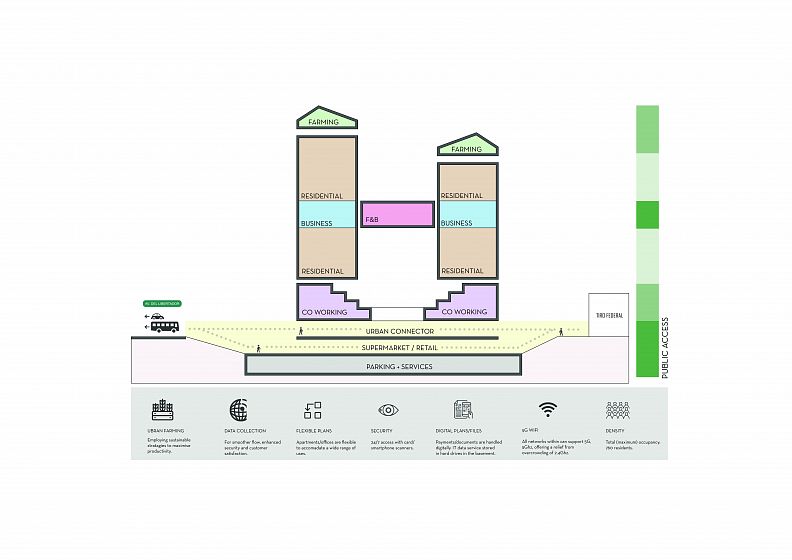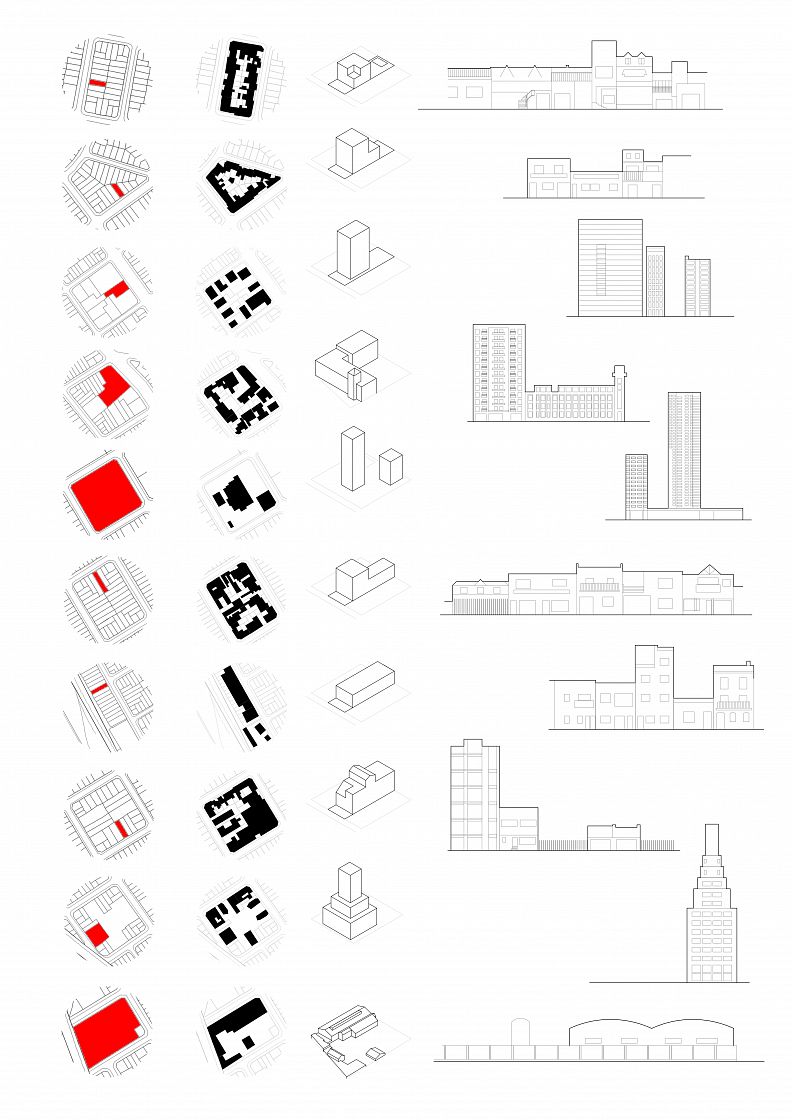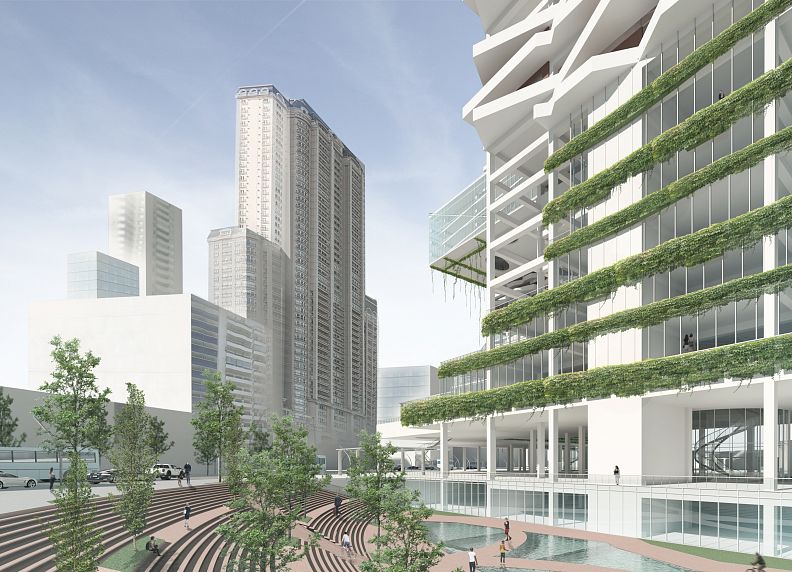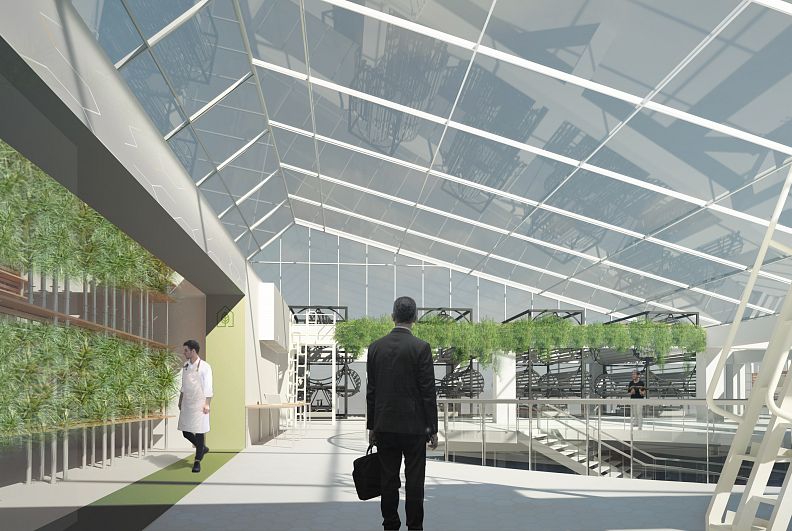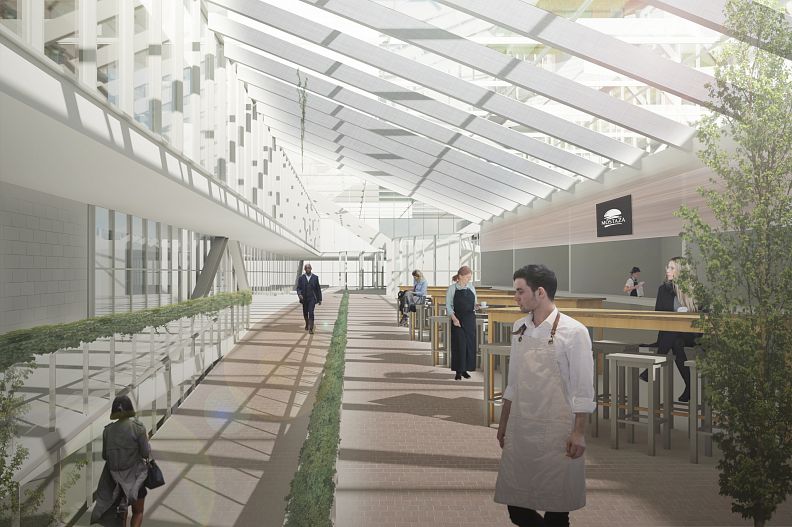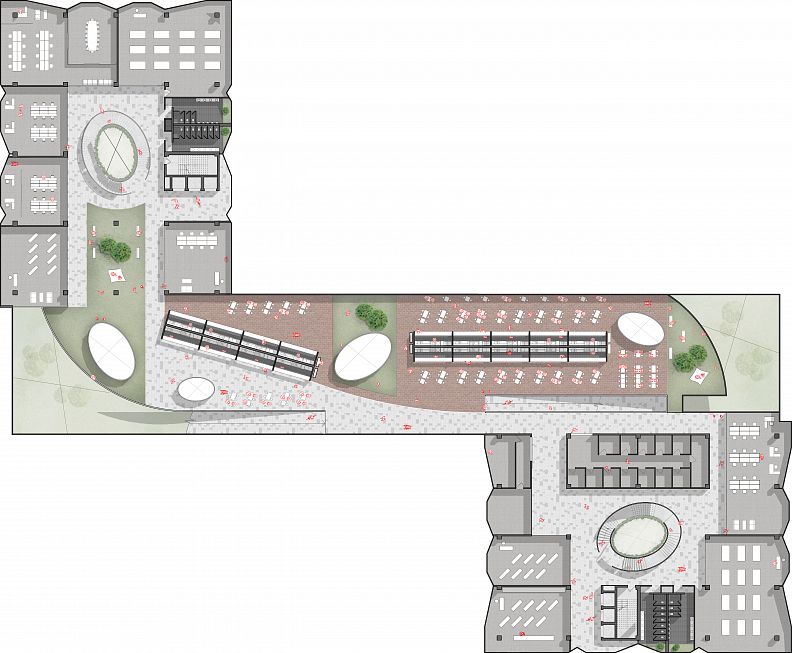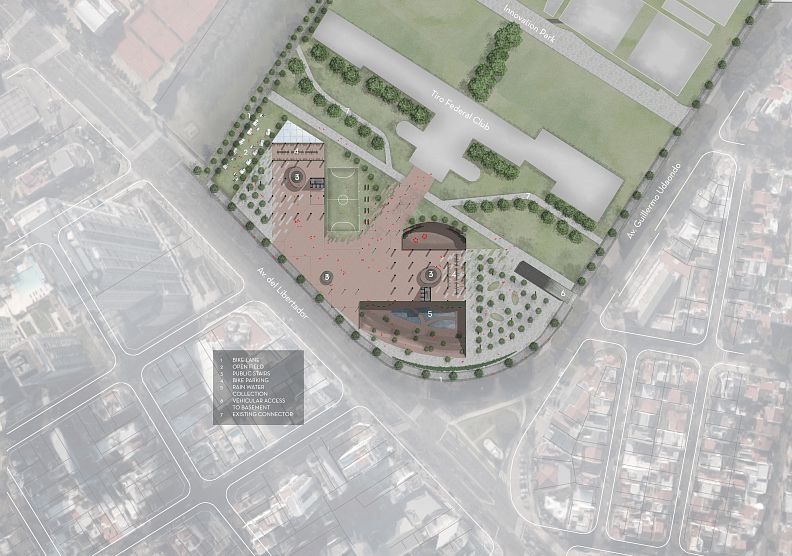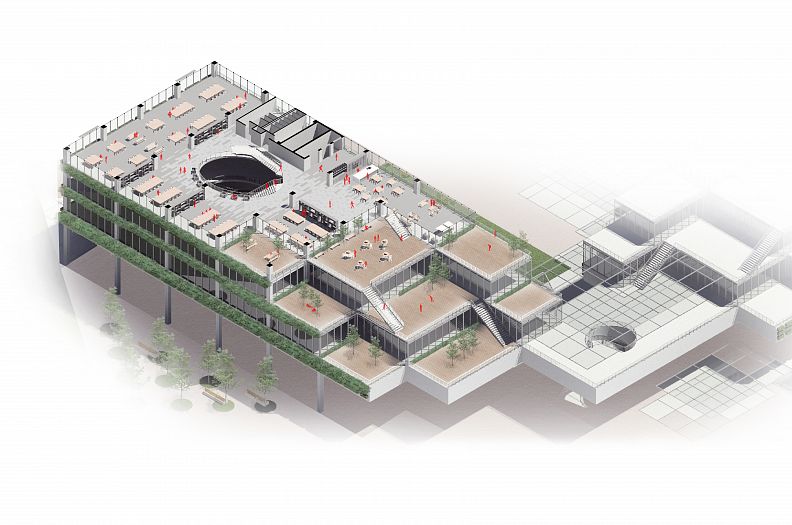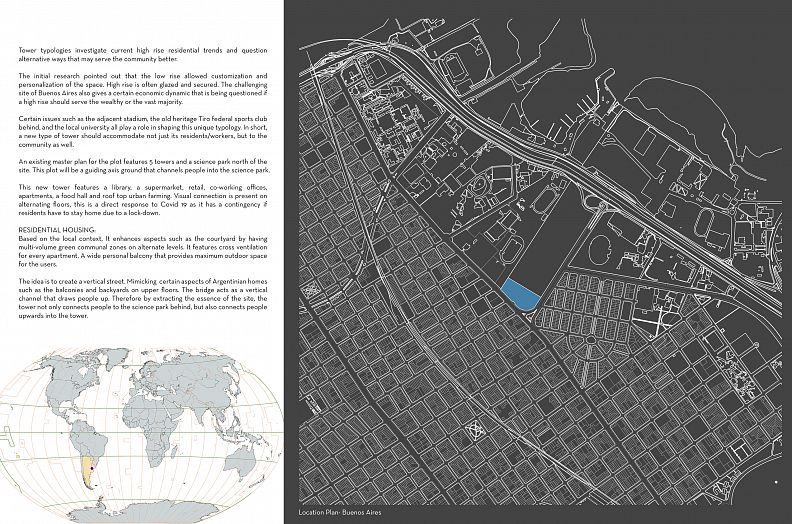Tower Typologies

Project idea
Tower typologies investigate current high rise residential trends and question alternative ways that may serve the community better.
Project description
The initial research pointed out that the low rise allowed customization and personalization of the space. High rise is often glazed and secured. The challenging site of Buenos Aires also gives a certain economic dynamic that is being questioned if a high rise should serve the wealthy or the vast majority.
Certain issues such as the adjacent stadium, the old heritage Tiro federal sports club behind, and the local university all play a role in shaping this unique typology. In short, a new type of tower should accommodate not just its residents/workers, but to the community as well.
An existing master plan for the plot features 5 towers and a science park north of the site. This plot will be a guiding axis ground that channels people into the science park.
This new tower features a library, a supermarket, retail, co-working offices, apartments, a food hall and roof top urban farming. Visual connection is present on alternating floors, this is a direct response to Covid 19 as it has a contingency if residents have to stay home due to a lock-down.
RESIDENTIAL HOUSING:
Based on the local context, It enhances aspects such as the courtyard by having multi-volume green communal zones on alternate levels. It features cross ventilation for every apartment. A wide personal balcony that provides maximum outdoor space for the users.
The idea is to create a vertical street. Mimicking certain aspects of Argentinian homes such as the balconies and backyards on upper floors. The bridge acts as a vertical channel that draws people up. Therefore by extracting the essence of the site, the tower not only connects people to the science park behind, but also connects people upwards into the tower.
Technical information
Height: 120M
Highest floor:32
Location: Buenos Aires
